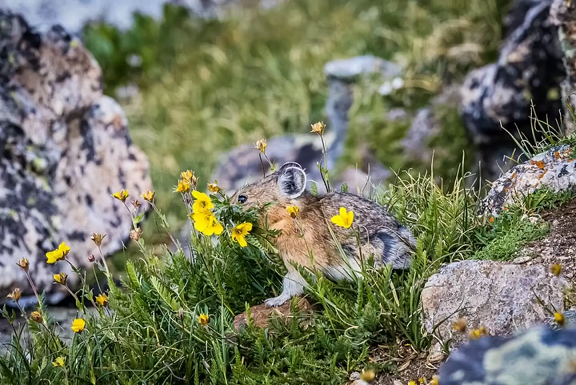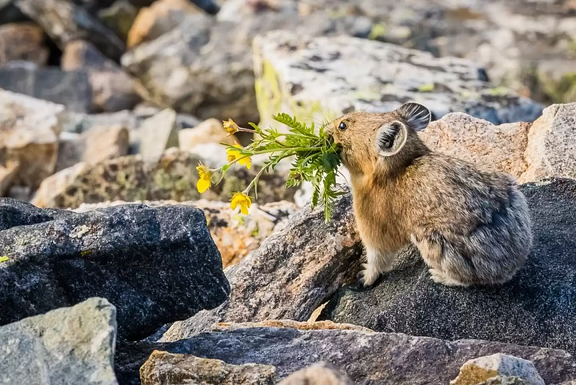The American pika, one of the region’s most charming and little-known animals, was featured in a post earlier this month by authorities at Cedar Breaks National Monument in Utah.
These little mammals, which are related to rabbits, spend their days foraging for their preferred food: wildflowers, amid rocky outcrops at higher altitudes.
Pikas, on the other hand, don’t merely munch as they go.
Pikas gather and preserve bright bouquets while there are many to be found to ensure they have enough food to last them through the chilly winter, when fresh flowers are in limited supply.
Park Service noted that, “[Pikas] do not hibernate and will collect wildflowers and grasses in the summertime and lay them out on the rocks in the sun to dry them. They do this to keep their food from going moldy during the winter. These are known as haystacks, and they are kept in their burrows until winter.”

Because pikas are so little and quick, photographing their flower-gathering habit can be difficult to say the least.
However, late last month, while on a trek in the Colorado backcountry, photographer Charles Haupert came across the ideal chance.

A young pika in the distant was preparing to start his day as the animal world’s cutest florist. It was a fortunate break for Haupert.
In an interview, Haupert explains, “I’ve seen them collecting flowers before, but I’ve never been quick enough with my camera to capture it in action. They are always on the move.” This day, though, was different. Haupert had his camera ready.

The pika bounced around a flowering patch among the rocks, picking flowers in her mouth as Haupert watched, and Haupert goes on to add, “Overall, they are pretty cute.”
When the pika had gathered as much as her tiny jaws could hold, she set out with her booty, as he explains, “[She] headed down the mountain, over larger boulders, to hide what was picked.”
She would wait just long enough for him to photograph her on the way.

Haupert also goes on to explain, “They then vanish pretty quickly. You can hear them chirp, but they can be difficult to see at times.”
And then the pika and her flowery treasure vanished from view.
The unusual photo opportunity lasted barely a minute, but Haupert considers himself fortunate to have gotten the opportunity at all.
“It was really just being in the right place and at the right time,” he explained.

Unfortunately, encounters like the one Haupert had may become even more rare.
Because American pikas are created for cold, alpine climates, they are extremely susceptible to rising temperatures caused by climate change. In fact, prolonged exposure to temperatures above 77 degrees Fahrenheit is lethal.
According to a National Park Service assessment, certain pika populations may become extinct by the end of the century.

Pikas have not yet been designated as an endangered species, but preparations are in the works to reduce the hazards they face in the future. And, happily, interactions like the ones caught by Haupert in these images may still do wonders in reminding people of all those who ought to be protected.
